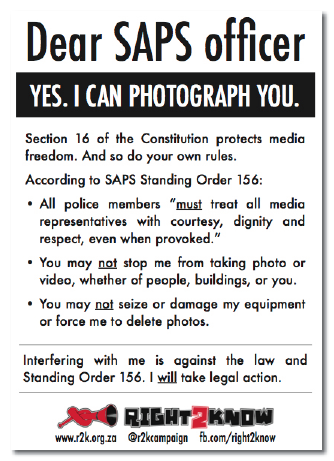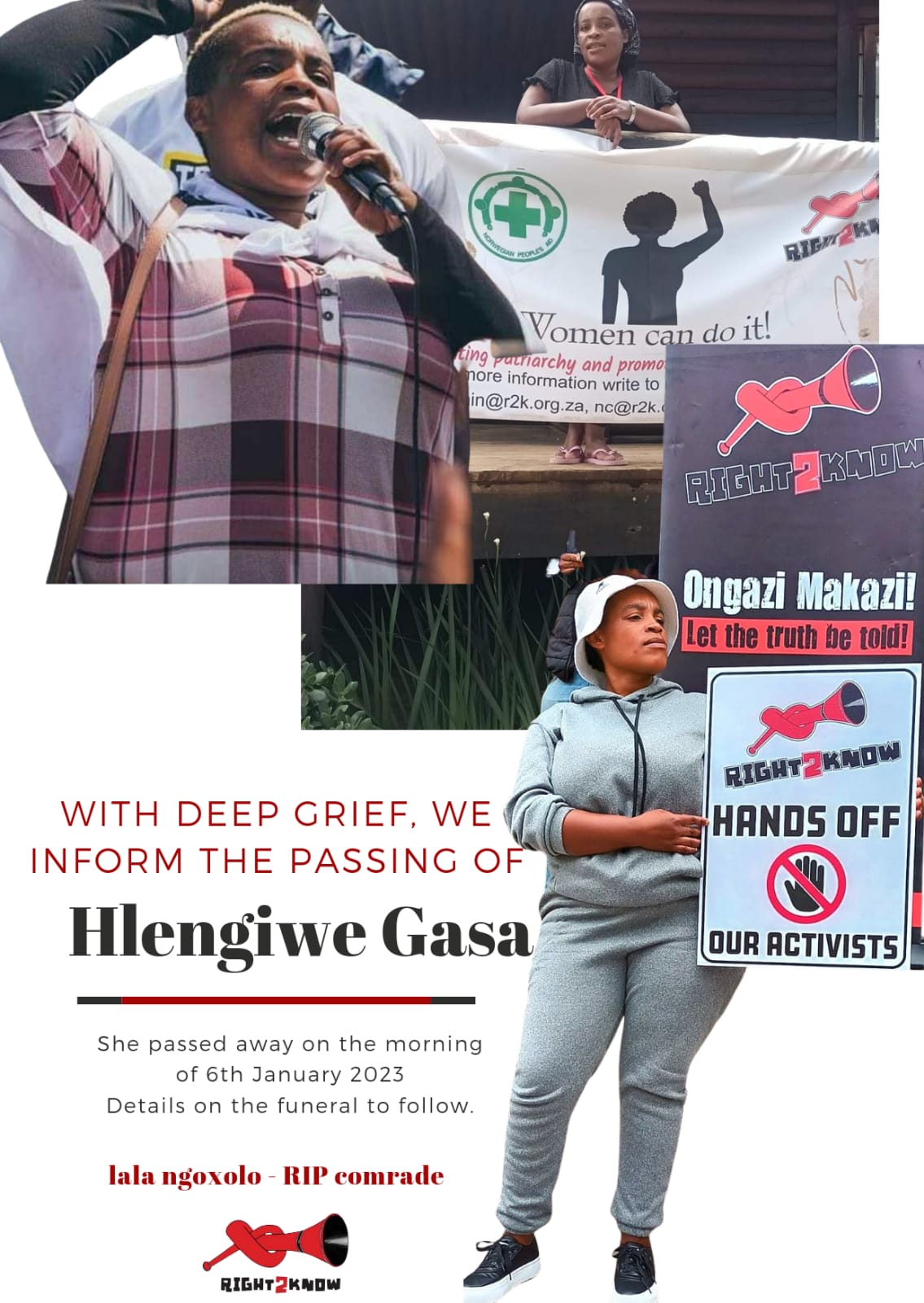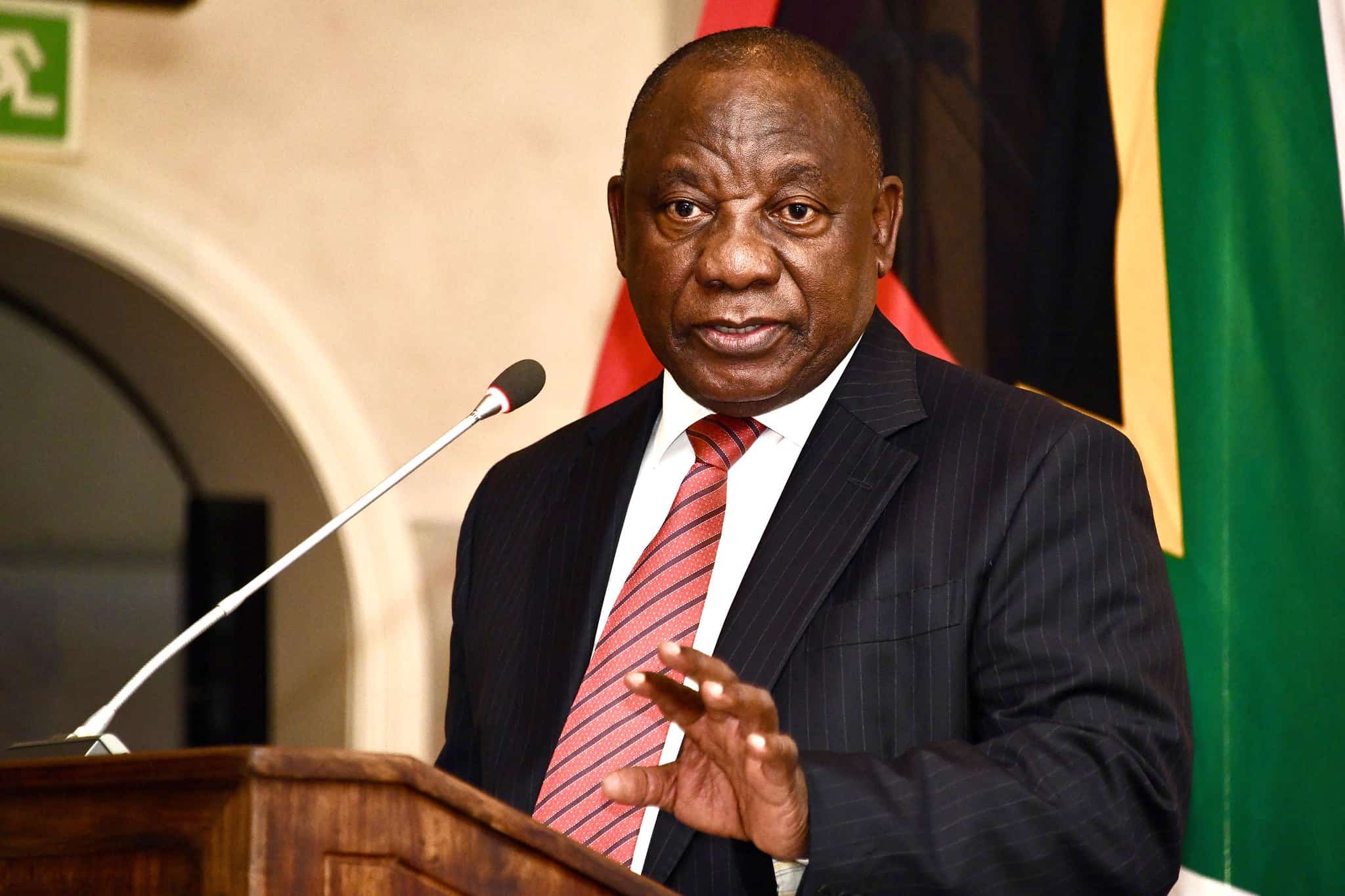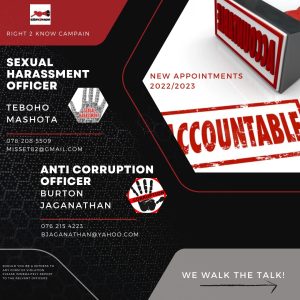Can the police stop me from taking photos? Standing Order 156
 Download R2K’s advisory on Standing Order 156 and the right to take film and video without police harassment!
Download R2K’s advisory on Standing Order 156 and the right to take film and video without police harassment!
SAPS officers almost never have the right to stop the media from taking photos or video. In fact they are under explicit instructions not to – SAPS Standing Order 156. We have put together an advisory on the Standing Order, so that members of the media know their rights, and SAPS officers’ responsibilities.
We’ve also summarised it on a single card, which you can print out, laminate, and keep on a lanyard or in your pocket when you are out on the streets.
So what is Standing Order 156?
SAPS issued Standing Order 156 in 2003 – it’s an extensive directive to all SAPS members on how they should interact with the media. It contains a number of instructions against interfering with the taking of photographs and video. Download it here.
But be warned: Standing Order 156 refers to “media representatives”, but it’s vague on who qualifies. R2K believes this should include citizen journalists – anyone with a cell phone camera – but SAPS members may see it differently. We can find no extra restrictions on members of the public to take video or photos, but citizen journalists should be extra cautious when interacting with SAPS.
As of July 2015, Standing Order 156 was under review after South African National Editor’s Forum (Sanef) complained to SAPS about repeated media harassment. This review is a chance to expand the order to cover the rights of citizen journalists as well as media professionals.
So what does Standing Order 156 say?
- Section 10(1) states that police officers “must treat all media representatives with courtesy, dignity and respect, even when provoked.”
- Section 10(3)a states that, although the media may be prohibited in terms of s69 of the South African Police Service Act from publishing certain images, “a media representative may not be prohibited from taking photographs or making visual recordings” by any SAPS member. This includes photographs of police officers themselves.
- Section 10(3)c states that “a media representative may under no circumstances be verbally or physically abused and cameras or other equipment may not be seized”, unless the equipment is being seized as evidence in terms of the law.
- Also, “under no circumstances whatsoever, may a member willfully damage the camera, film, recording or other equipment of a media representative.”
What does this mean?
- When in public spaces you have the right to photograph anything in plain view, including SAPS members.
- However, section 17(2)a does make provision for the police to prevent the filming of police premises, but only when “there are reasonable grounds to believe that such visual material is intended to be used in the planning or execution of a crime or will jeopardise security measures.”
- SAPS members may not stop you from photographing any person, although there are prohibitions on publishing photos of certain people without permission (e.g. someone suspected of a criminal offence but who has not yet been charged, or a witness). This is spelled out in section 17(1) – media professionals should read it.
What are the restrictions?
- The right to photograph does not give you the right to trespass, break any other laws or interfere with lawful SAPS activities.
- Only senior SAPS leadership may authorise someone to take film or video of the inside of police premises, and the outside and inside of police cells.
- There are some (limited) restrictions on filming National Key Points.
- Standing Order 156 is just an instruction to SAPS members; it is not a law and has not been tested in court (as far as we know).
- This order doesn’t apply to metro police departments, which are separate from SAPS. It’s not yet clear if any metro police departments have similar orders.
What to do if a SAPS member tries to stop you from taking photos?
- Stay calm. Do not raise your voice or provoke violence against you.
- If police demand that you delete data under threat of violence, do so. Your life cannot be measured in megabytes.
- If you are detained, ask what crime you are suspected of committing. If the officer demands to view material or confiscate your equipment, ask what legal basis s/he to do so, and ask for the officer’s name, police station and commanding officer.
- If you experience any contravention of Standing Order 156, you may lodge a complaint to the station commander of the nearest station. Disobeying a Standing Order is a disciplinary offence.
- If the SAPS station commander refuses to take disciplinary action against the member concerned or is otherwise unhelpful, you may take legal action against the SAPS.
Equip yourself
Issued by the Right2Know Campaign, July 2015.
For more info, contact 0214471000 or admin@r2k.org.za.
Legal disclaimer: This advisory may contain inaccuracies and omissions, and does not serve as legal advice. Be safe and exercise caution when interacting with SAPS!




